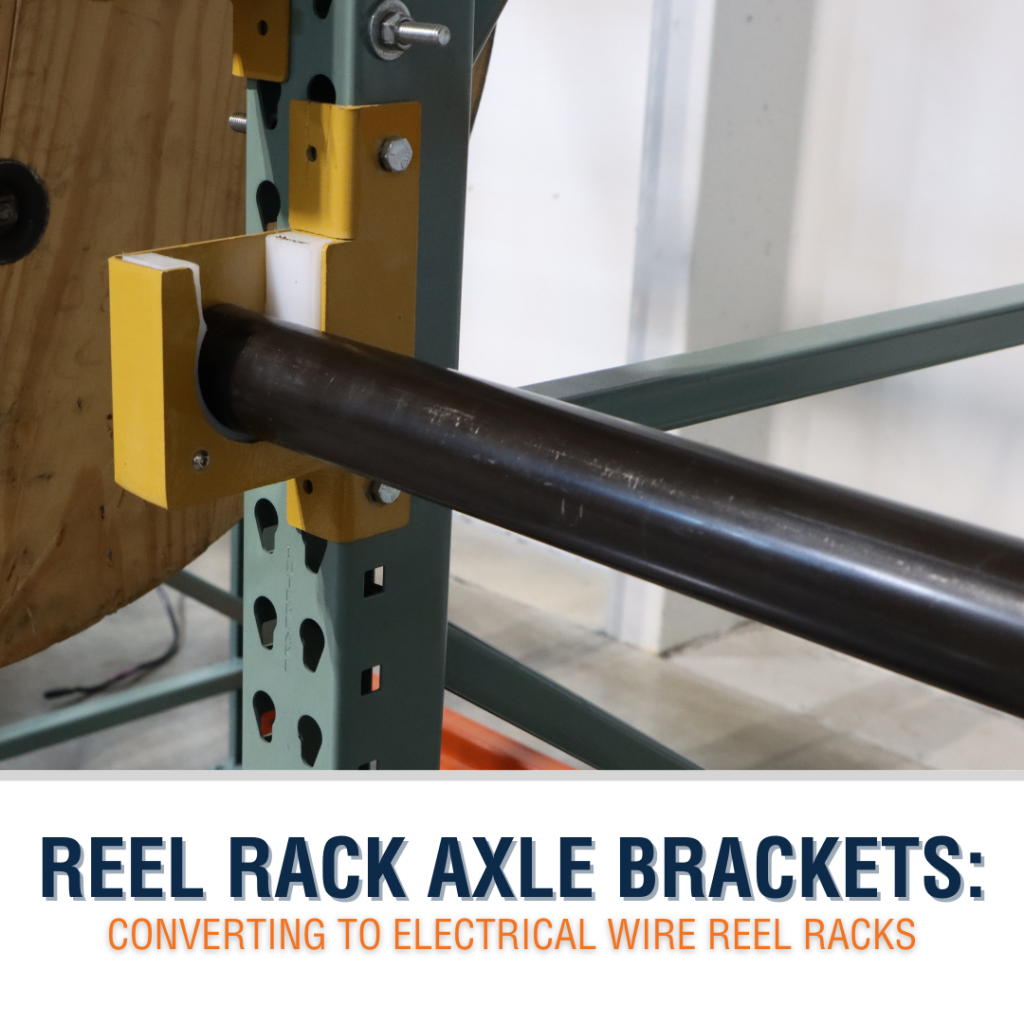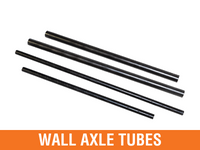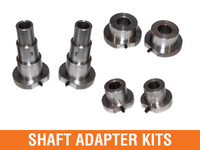We use cookies to make your experience better. To comply with the new e-Privacy directive, we need to ask for your consent to set the cookies. Learn more.
Reel Rack Axle Brackets: Converting to Electrical Wire Reel Racks
Warehouses are usually rich with pallet racking. But what happens when they start to stock wire and cable—or even rope, chain, and other coiled materials? Dedicated electrical wire reel racks are expensive, and there may not be space in the facility to add whole new racking systems.

These warehouse operators need a way to convert existing pallet racking into reel racks. The solution starts with specialized products called reel rack axle brackets—but it doesn’t end there. Here’s everything you need to store—and pay out—electrical wire and cable in a standard pallet racking system.
Equipment: Reel Rack Axle Brackets, Reel Axles, and Shaft Adapters
To convert pallet racks into reel racks, start by collecting the conversion equipment. These products fall into three general categories:
Reel Rack Axle Brackets
If you already have your cable reels and axle tubes that fit into their arbor holes, you only need one piece of equipment—or, more accurately, a pair of items. Reel rack axle brackets are shaft supports that bolt securely onto racking uprights. These steel accessories hold either end of the reel shaft, allowing them to turn freely as you fill orders, and effectively converting a pallet rack into an electrical wire reel rack.
Wall Axle Tubes
Operations that are just getting set up to handle cable, wire, and other coilable materials may have the reels—but they’ll also need axles that fit those reels. Wall Axle Tubes are fairly simple materials, but they have to match the specifications of a fully loaded reel. These include:
- Standard lengths for reel axles range from 37 ½ inches up to 49 ½ inches. Choose axles that fit the distance from one reel axle bracket to the other precisely, without leaving space that could lead to collapse.
- Wire and cable reels turn when an axle is inserted into the central arbor hole in the reel. These arbor holes have different diameters, depending on the reel, so it’s important to choose axles that match. Typical diameters for reel axles range from 1 ⅜ inches up to 2 inches, which fit into larger arbor holes without allowing too much give.
- Weight capacity. A fully loaded steel cable reel can weigh thousands of pounds—and you need an axle that can support this weight. Ask providers for weight capacities before purchasing your stock of reel axles.
If you already have axles that fit your reels, but you’re having trouble fitting them into racks and reel-handling equipment, consider the third category of conversion equipment.
Shaft Adapter Kits
Reel axle brackets may be more or less one-size-fits-all, but they’re not the only systems that must be compatible with axles. You may use various automated reel fillers, jack stands, or other reel handling equipment in your facility—and they might not all meet the same specifications.
In these cases, look for Shaft Adapter Kits that bridge the gap between axles and fittings. These axle-end caps fit over (or into) axle tubes on one end. The other expands clearance or creates a close-fitting hub with storage and handling equipment. You can even find step adapters, or step bushings, that fit multiple sizes of shafts and fittings at once.
Once you have all your equipment in hand, converting a pallet rack into a reel rack is just a question of a few bolts—and some specialized reel handling equipment to put your reels in place. But there’s one other thing you should know about reel rack axle brackets.
Challenges Associated with Reel Rack Axle Bracket Conversions
Reel axle brackets offer a functional way to store cable reels in pallet racking systems, but they come with their own challenges. Most of these brackets are steel, which is required to support the heavy loads of a full cable reel. But when metal axles turn against metal supports, something has to give—and after years of use, you may encounter failure from the weakened axle ends.
That’s not the only concern with most rack brackets. The metal-on-metal friction also makes a terrible screeching sound. Not only does that create an unpleasant work environment, it can actually run afoul of safety standards set by the Occupational Safety and Health Administration (OSHA).
OSHA standard 1910.95 sets limits on occupational noise exposure. The constant squeal of axles turning against metal supports can combine with other workplace sounds to push the acoustic environment over the edge of compliance.
Axle Holding Kits from BHS, Inc. solve the problem. These unique reel rack axle brackets contain an internal UMHW lining. This specialized plastic combines incredible strong compression strength with a low coefficient of friction, which means axles will spin smoothly during payout—and they won’t make noise when doing so.
Choose Axle Holding Kits to convert pallet racks to reel racking without the risks associated with all-metal reel rack axle brackets. To learn more, contact the BHS sales team at 1.800.BHS.9500.


